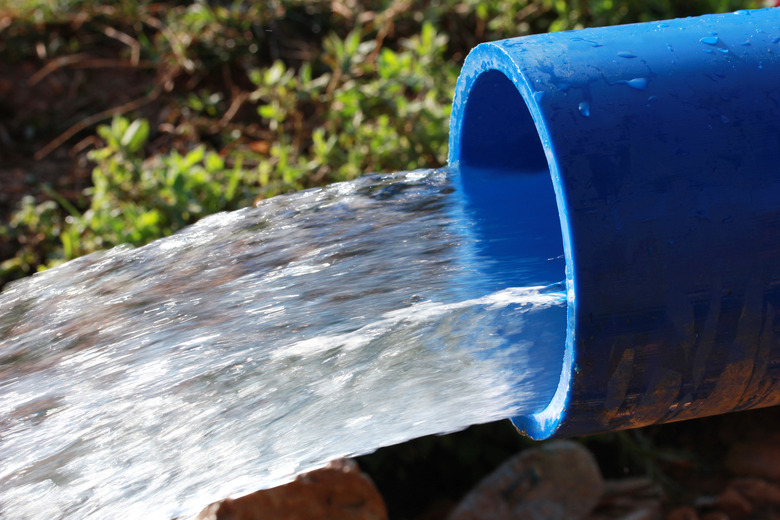Flow Rate Vs. Pipe Size
According to Poiseuille's law, the flow rate through a length of pipe varies with the fourth power of the radius of the pipe. That isn't the only variable that affects flow rate; others are the length of the pipe, the viscosity of the liquid and the pressure to which the liquid is subjected. Poiseuille's law assumes laminar flow, which is an idealization that applies only at low pressures and small pipe diameters. Turbulence is a factor in most real-world applications.
The Hagen-Poiseuille Law
The Hagen-Poiseuille Law
The French physicist Jean Leonard Marie Poiseuille conducted a series of experiments on fluid flow during the early 19th century and published his findings in 1842. Poiseuille is credited with having deduced that flow rate was proportional to the fourth power of pipe radius, but a German hydraulics engineer, Gotthilf Hagen, had already arrived at the same results. For this reason, physicists sometimes refer to the relationship Poiseuille published as the Hagen-Poiseuille law.
The law is expressed as:
Volume flow rate = π X pressure difference X pipe radius 4 X liquid viscosity / 8 X viscosity X pipe length.
F = πPr4 / 8nl
To put this relationship into words: At a given temperature, flow rate through a tube or pipe is inversely proportional to the length of the tube the viscosity of the liquid. Flow rate is directly proportional to the pressure gradient and the fourth power of the radius of the pipe.
Applying Poiseuille's Law
Applying Poiseuille's Law
Even when turbulence is a factor, you can still use Poiseuille's equation to get a reasonably accurate idea of the how flow rate changes with pipe diameter. Keep in mind that the stated size of a pipe is a measure of its diameter, and you need the radius to apply Poiseuille's law. The radius is half the diameter.
Suppose you have a length of 2-inch water pipe, and you want to know how much the flow rate will increase if you replace it with 6-inch pipe. That's a change in radius of 2 inches. Assume the length of the pipe and the pressure are constant. The temperature of the water should also be constant, because the viscosity of water increases as the temperature decreases. If all these conditions are met, the flow rate will change by a factor of 24, or 16.
Flow rate varies inversely to length, so if you double the length of the pipe while keeping the diameter constant, you'll get roughly half as much water through it per unit of time at constant pressure and temperature.
Cite This Article
MLA
Deziel, Chris. "Flow Rate Vs. Pipe Size" sciencing.com, https://www.sciencing.com/flow-rate-vs-pipe-size-7270380/. 13 March 2018.
APA
Deziel, Chris. (2018, March 13). Flow Rate Vs. Pipe Size. sciencing.com. Retrieved from https://www.sciencing.com/flow-rate-vs-pipe-size-7270380/
Chicago
Deziel, Chris. Flow Rate Vs. Pipe Size last modified March 24, 2022. https://www.sciencing.com/flow-rate-vs-pipe-size-7270380/
